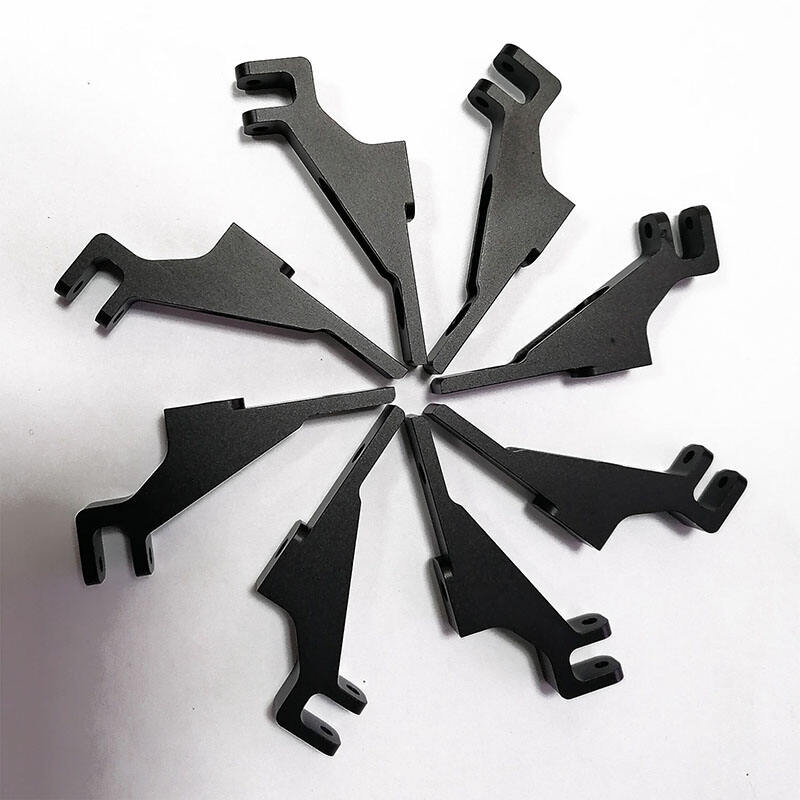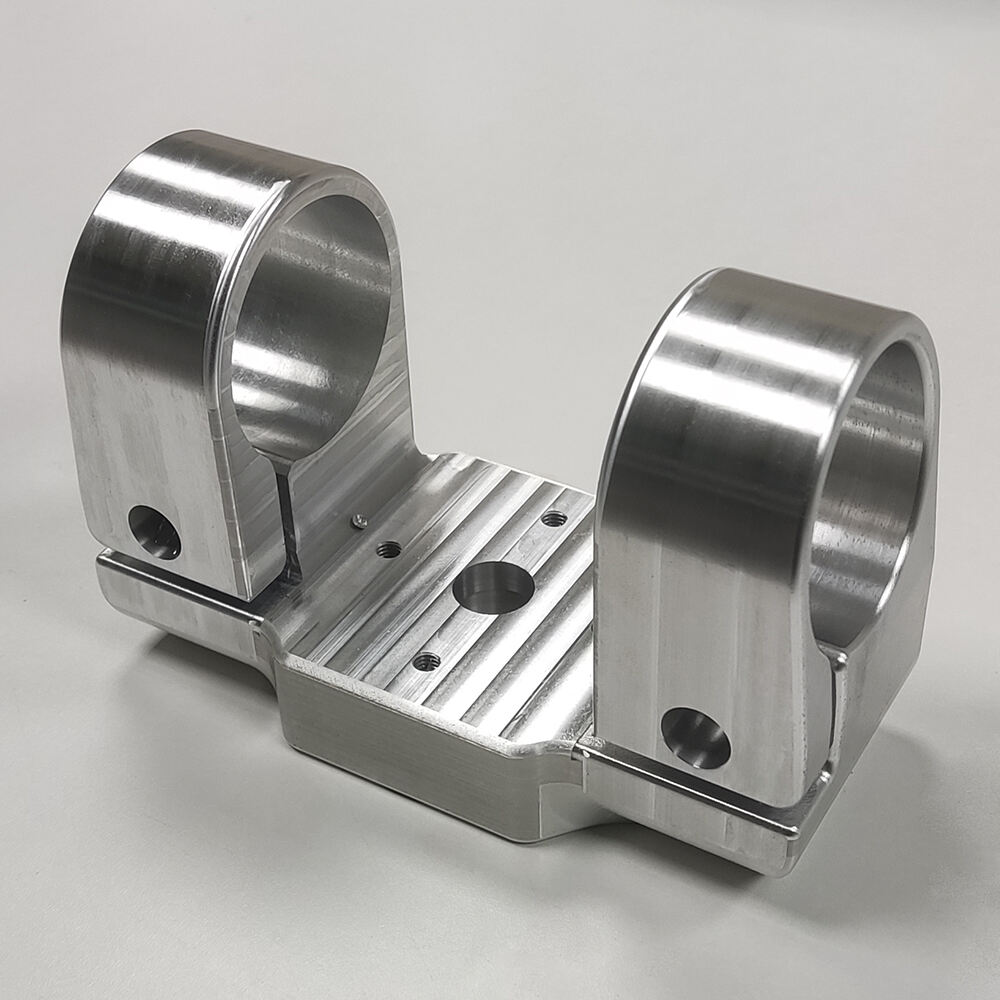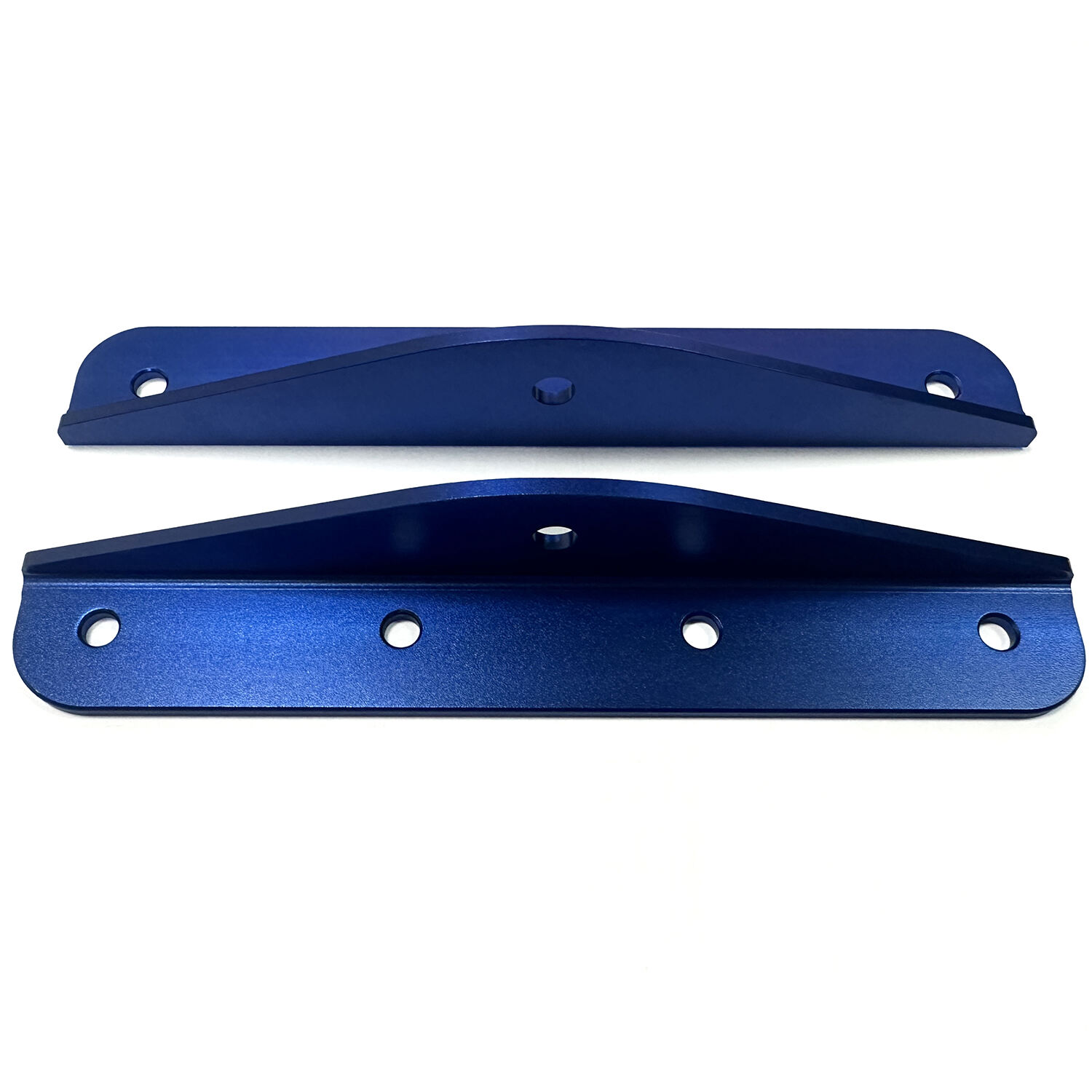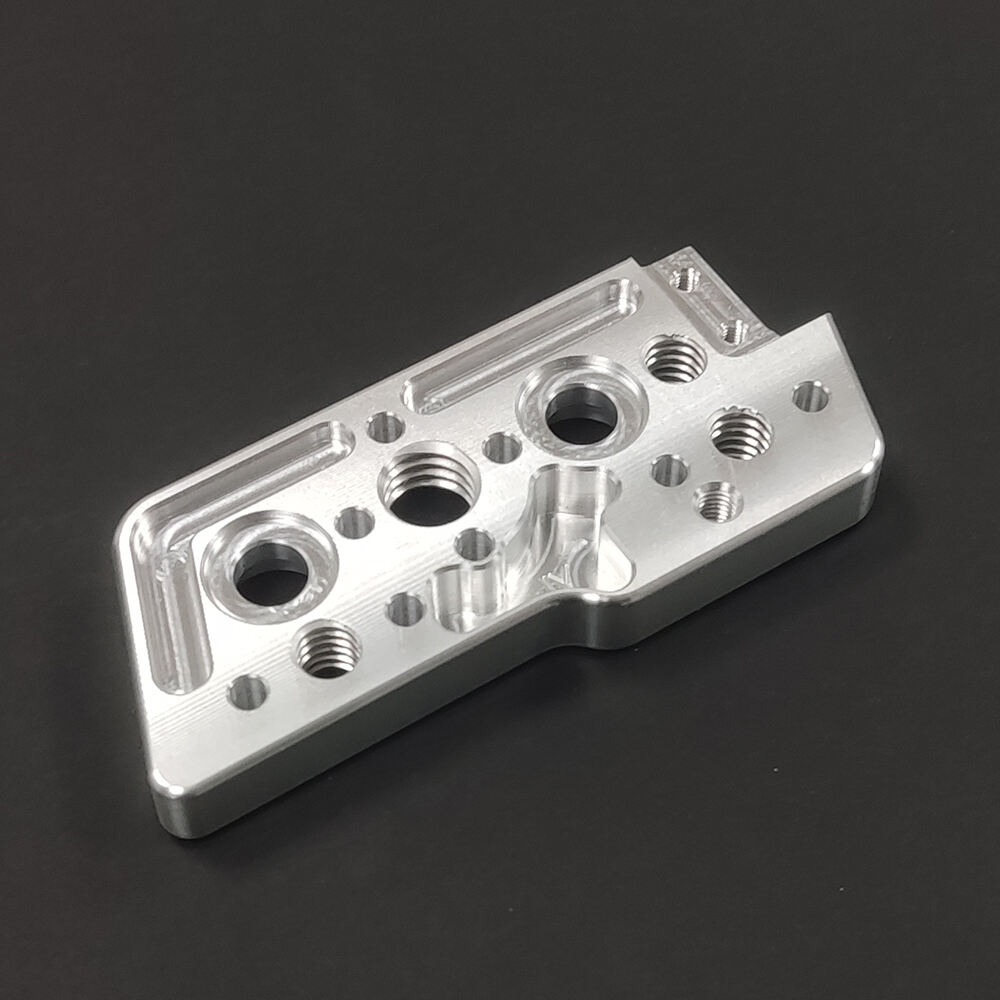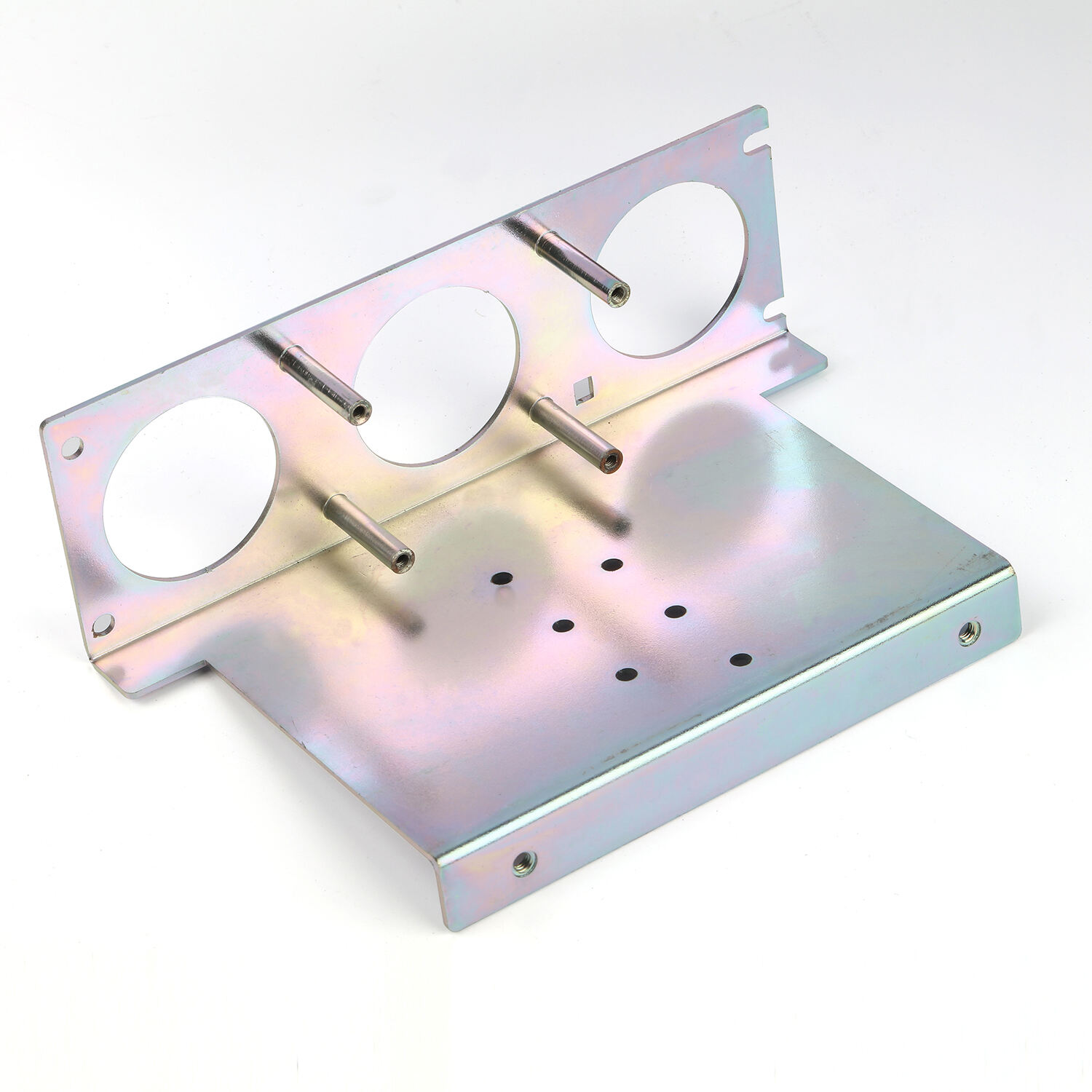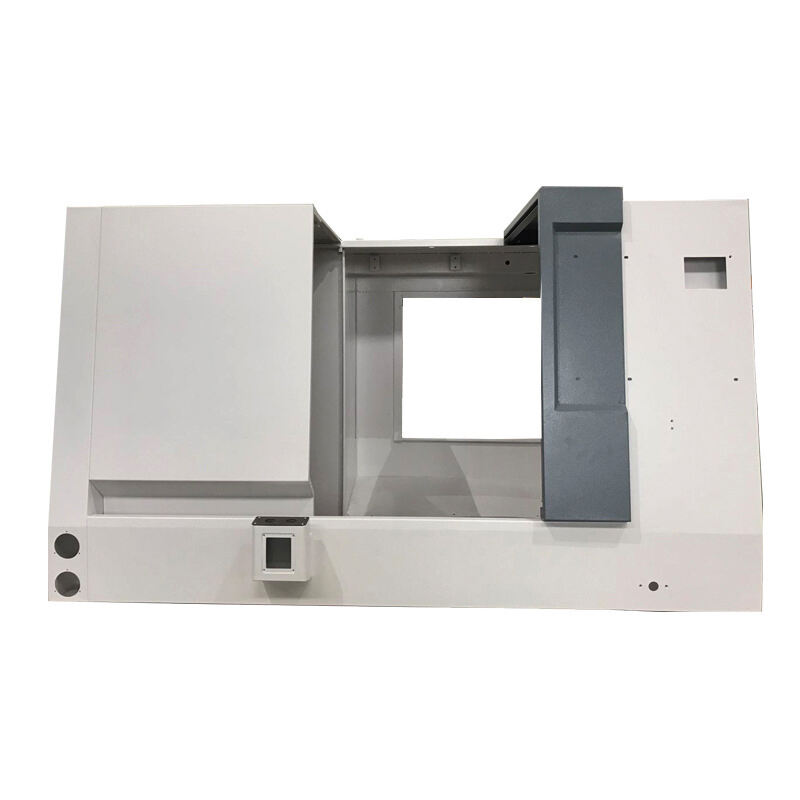CNC milling: efficient transformation from design to finished product
Understanding CNC Milling and Its Importance
CNC milling sits at the heart of most manufacturing these days. Basically, it works by having computers take control of milling machines through what's called CNC systems. This setup lets manufacturers do really precise cutting and shaping repeatedly, something that would be tough to match manually. Across industries from aerospace to automotive, this tech helps make all sorts of complicated parts with amazing accuracy. Manufacturers have turned to CNC milling more and more because it cuts down on mistakes people might make, speeds things up considerably, and allows for making large quantities of parts while still keeping everything consistent in quality. The difference between traditional methods and CNC is pretty night and day when looking at both speed and precision.
CNC milling has had a major effect on how productive and innovative industries are today. These machines take over complex jobs that used to require manual labor, completely changing the game for metalworking shops and manufacturing plants across different sectors. With features like drilling holes, creating beveled edges, and making gears, CNC mills have become essential equipment in places ranging from car factories to airplane component makers and even train part producers. Because of this technology, companies can keep up with customer demands without sacrificing accuracy or uniformity something that matters a lot when competing against others in tight markets. What makes CNC milling so valuable is that it works just as well for mass producing standard parts as it does for crafting unique components needed for niche applications where regular manufacturing methods fall short.
Key Strategies for Efficient CNC Milling
Optimizing Cutting Parameters
Getting the right cutting parameters makes all the difference when it comes to extending how long tools last and getting those nice smooth surfaces. Machinists tweak things like feed rate, spindle speed, and depth of cut based on what they're working with and what their CNC machine can handle. When these settings match up properly, the whole operation runs better while putting less stress on the tools themselves. Some research into fast cutting processes showed that finding those sweet spots in parameter settings really cuts down on tool wear and boosts productivity too. These days many shops are adding smart sensors to their equipment which lets them make adjustments on the fly as conditions change during cutting operations. This means the machining stays efficient even when materials vary or unexpected issues pop up during production runs.
Tool Selection and Maintenance
Getting the right tools makes all the difference when it comes to getting the most out of machining operations while protecting equipment from unnecessary wear. Different materials and design specs demand their own particular tool sets for optimal performance. Shops need to remember regular maintenance matters too. Sharpening bits and swapping out dull tools keeps those CNC machines humming along without unexpected breakdowns that eat into profits. The pros know what they're talking about when they say good quality tooling pays off over time. Less frequent replacements mean fewer interruptions plus better output rates. Maintaining sharp tools isn't just about preventing damage either. Well cared for equipment delivers consistently good work across various jobs, which ultimately means happier customers and smoother day to day operations in the workshop.
Minimizing Non-Cutting Time
Cutting down on all that downtime between actual machining work matters a lot when trying to boost productivity in CNC shops. When manufacturers get serious about shortening those setup periods and making tool changes happen faster, they keep their machines running through actual cutting tasks rather than sitting idle. Getting rid of extra steps in the workflow makes everything run smoother day to day. Many shops have started implementing automation solutions like robotic arms for loading and unloading parts, which helps reduce those frustrating gaps where machines just sit there waiting. According to shop floor observations across various manufacturing facilities, companies adopting these approaches typically see noticeable reductions in machine downtime, which directly translates into increased part production rates and overall better utilization of expensive equipment.
Advanced Techniques in CNC Milling
Adaptive Toolpaths
In CNC milling, adaptive toolpath strategies really matter because they let the machine paths change on their own while cutting different materials. The system gets feedback as it goes along and adjusts accordingly. What makes this approach so good is that it boosts accuracy and keeps the cutting tool properly engaged with what's being worked on. Shops that adopt these techniques usually see faster production cycles since the tools stay engaged consistently without compromising on quality standards. For complicated shapes and parts that traditional approaches struggle with, this method just works better. Machinists find themselves relying heavily on adaptive routing when dealing with intricate designs that would otherwise take forever or risk damaging expensive equipment during production runs.
High-Speed Machining
When using high speed machining, operators can crank up cutting speeds which cuts down on cycle times and gets more parts made faster. But there's a catch here folks need to watch out for. Running at those top speeds without proper cooling systems or durable tools just asks for trouble down the road. Pairing fast machining with smart tool path strategies gives components those smooth surfaces that look good and work better too. The aerospace sector loves this approach because they need parts ready yesterday, same goes for car manufacturers racing against deadlines. Some shops report being able to double their output while maintaining quality standards when they implement these techniques right.
Utilizing 5-Axis Machining
Five axis machining takes CNC milling to another level because it lets parts move along several directions at once, which really boosts what can be done on the machine. For companies making complicated parts or detailed components that just cant be produced on regular three axis equipment, this makes all the difference. When businesses invest in five axis tech, they gain something no one else has those extra movements mean better control over complex shapes. The manufacturing world is seeing big benefits from this approach, especially in aerospace where parts need to fit together perfectly despite their complicated geometry. Automotive and medical device makers are also jumping on board since these machines handle tight tolerances much better than traditional setups.
Essential CNC Milling Products for Optimal Performance
High Quality CNC Lathe Machinery Products
Getting good CNC lathe machines really matters if we want to make parts that hit those tough industry specs. Look for equipment that can handle various tasks without sacrificing build quality. Sure, top notch machines come with bigger price tags upfront compared to budget options. But most shops find they last longer and work more reliably over time, which actually saves money in the long run despite the higher starting costs. The extra spend pays off through fewer breakdowns and consistent production results month after month.
OEM Custom Precision CNC Machining Stainless Steel Parts
Stainless steel parts crafted by OEMs offer exceptional strength and stand up well against corrosion, which makes them suitable for everything from industrial equipment to medical devices. Working with trusted OEM suppliers matters a lot when it comes to getting quality products that meet all the required specs. Modern CNC machining techniques allow manufacturers to hit those really tight tolerances, something that just isn't possible with older methods. This attention to detail translates into better performing components across various stainless steel fabrication projects.
OEM Custom Precision CNC Machining Aluminum Alloy Parts
Many industries prefer aluminum alloys because they're light and easy to work with during machining processes. When manufacturers machine aluminum with precision, they can create better designs that last longer and perform better in actual applications. Making parts from aluminum alloy involves techniques aimed at cutting down on material waste without sacrificing how much gets produced. This balance between resource conservation and productivity remains important for companies looking to keep their operations running smoothly while also being mindful of their impact on the environment.
Toolpath Optimization for CNC Milling
Understanding Toolpath Basics
In CNC programming, toolpaths matter a lot because they basically tell cutting tools where to go when machining parts. Getting a good grasp on the fundamentals of toolpaths isn't just helpful it's pretty much necessary if someone wants to write decent CNC programs that actually work well in practice. There are several different kinds of toolpaths out there like straight line cuts, round ones for circles, and those spiral shaped paths called helicals. Each type affects how fast things get done and what kind of finish ends up on the part being made. When machinists learn to set these paths right or tweak them when needed, they see real improvements not only in how quickly operations run but also in the final quality of whatever component comes off the machine. For shops looking to get the most out of their CNC equipment, spending time mastering proper toolpath design makes all the difference between average results and consistently precise manufacturing outcomes.
Types of Toolpaths
Toolpaths come in different forms like contouring, pocketing, and drilling, all designed for particular tasks during machining processes. Contouring works great when finishing surfaces needs attention, while pocketing helps clear out material from those tricky cavity areas. Drilling gets the job done fast when creating accurate holes is necessary. Picking the right toolpath isn't just important but makes a big difference in cutting down on machining time and getting better results overall. Machinists who know what works best with each type tend to run their shops more efficiently and produce parts that meet quality standards consistently across production runs.
Using CAD/CAM Software for Optimization
CAD CAM software has changed how we approach toolpath optimization through automation of both design and manufacturing steps. The software does more than just show where tools will cut material it actually checks for possible collisions during operation which cuts down on machining time significantly. When companies implement these CAD CAM systems they remain competitive in the market while speeding up prototype development and making design adjustments much faster. With all these features at their disposal, businesses find themselves better equipped to handle sudden market shifts without compromising product quality. They can keep innovating within their entire workflow from initial concept right through to final production runs.
Choosing the Right Materials
What kind of material gets chosen makes all the difference when it comes to how efficient a CNC machining operation runs and what quality end product comes out at the other end. Materials have different characteristics that affect machining performance big time. Think about things like tensile strength, how stretchy they are (ductility), and how heat moves through them (thermal conductivity). Take steel for example it needs to hold up against cutting forces without warping or breaking during machining. Industry numbers show that picking the right material does more than just extend tool life it actually cuts down on overall production expenses too. When making material choices, manufacturers need to find this sweet spot between something that machines easily and still meets all those specific requirements for the finished component.
Material Preparation and Handling
Getting materials ready right before CNC milling makes all the difference when it comes to cutting down on defects. The work starts with cleaning off any dirt or grime, smoothing out those rough edges after cutting, and coating parts with something to stop rust from forming during processing. These steps really boost how well the machine works on the material. How we store and move these materials matters too. If they get dented or scratched while sitting around waiting their turn, that messes up the final product's accuracy. Shops that invest in better prep methods save money in the long run because setups take less time and there's fewer waste from bad cuts. Most machinists will tell anyone who asks that spending extra time on material prep pays off big time in both wallet space saved and better looking finished goods.
Impact of Material on Machining Efficiency
What kind of material goes into CNC machining makes a big difference when it comes to cutting speeds, feed rates, and tool selection, factors that really matter for getting good results. Some materials just demand special handling with cooling or lubrication to keep things running smoothly. Take stainless steel for instance it tends to work best with certain coolant approaches that are quite different from what works well with softer stuff like aluminum or various plastics. The shop floor has taught us through trial and error how much material selection impacts final product quality, which is why we see so many new approaches being developed all the time. Getting a handle on these connections helps manufacturing shops tweak their operations and stay ahead of the curve in today's fast moving market.
Improving CNC Milling Efficiency with Technology
Investing in High-Quality CAM Software
Getting good CAM (Computer-Aided Manufacturing) software represents a key investment for shops looking to boost machining efficiency while maintaining consistent product quality. These advanced programs handle toolpath creation automatically by examining part geometry, material characteristics, and what the CNC machines can actually do. The automation aspect cuts down on design time and minimizes mistakes that happen when humans manually create toolpaths. CAM software goes beyond basic automation too. It offers real insights about machining operations, pointing out areas where cutting speeds could be adjusted or how tools engage with materials better. This leads directly to lower production costs and faster output rates across the board. Shops that have made the switch to premium CAM packages typically see noticeable gains in both workflow efficiency and end product accuracy according to industry reports from manufacturing associations.
Data-Driven Monitoring and Analytics
Adding data monitoring and analytics to CNC milling really makes operations run smoother. When shops start using real time data, they get constant updates on how machines are performing and what's coming out of the production line. This helps spot where things slow down and makes it easier to make good decisions fast. Most manufacturers find that catching problems early stops small issues from turning into big headaches later on. The numbers back this up too many factories report around 15-20% gains in productivity after implementing these systems. Plus quality control gets better because operators catch defects sooner. Smart shops are already using these tools to predict when equipment might need servicing and plan resources accordingly. In today's tight manufacturing market, those who adopt these technologies first usually stay ahead of competitors who stick with old methods.
Lean Manufacturing Principles
Bringing lean manufacturing into CNC milling shops really cuts down on waste while making everything run smoother. When companies start using things like workflow maps and those continuous improvement approaches, they find ways to make their shop floor operations cleaner and get better value from every tool and material they use. The core idea is getting rid of all the stuff that doesn't actually add value for customers, which means saving money on things nobody cares about and speeding up production times across the board. Looking at real world results from manufacturers who've made the switch, most report beating their competition when it comes to how efficiently they operate day to day and what kind of bottom line profits they end up with. Creating this mindset around efficiency isn't just good for shop productivity either. Companies that stick with these methods tend to see improvements in their environmental impact too, plus they position themselves much better for whatever challenges come next in the market.
Recommended Products
Hot News
-
What is MIM processing method?
2025-11-25
-
Does copper for conductive purposes need surface treatment?
2025-11-21
-
Advantages of CNC machining
2024-01-16
-
What is CNC machining technology?
2024-01-16
-
The development trend of CNC machining
2024-01-16
-
What Role does Sheet Metal Shell Processing Play in Electronic Products?
2025-12-04
-
Can brass be welded?
2025-11-26
-
Good News-aluminum profile mass order has been produced and is about to be delivered
2025-11-27
-
Is there any difference in color between brass sheets and pipes?
2025-12-05

 EN
EN
 AR
AR
 CS
CS
 DA
DA
 NL
NL
 FI
FI
 FR
FR
 DE
DE
 EL
EL
 IT
IT
 JA
JA
 KO
KO
 NO
NO
 PL
PL
 PT
PT
 RU
RU
 ES
ES
 SV
SV
 TL
TL
 ID
ID
 VI
VI
 TH
TH
 MS
MS
